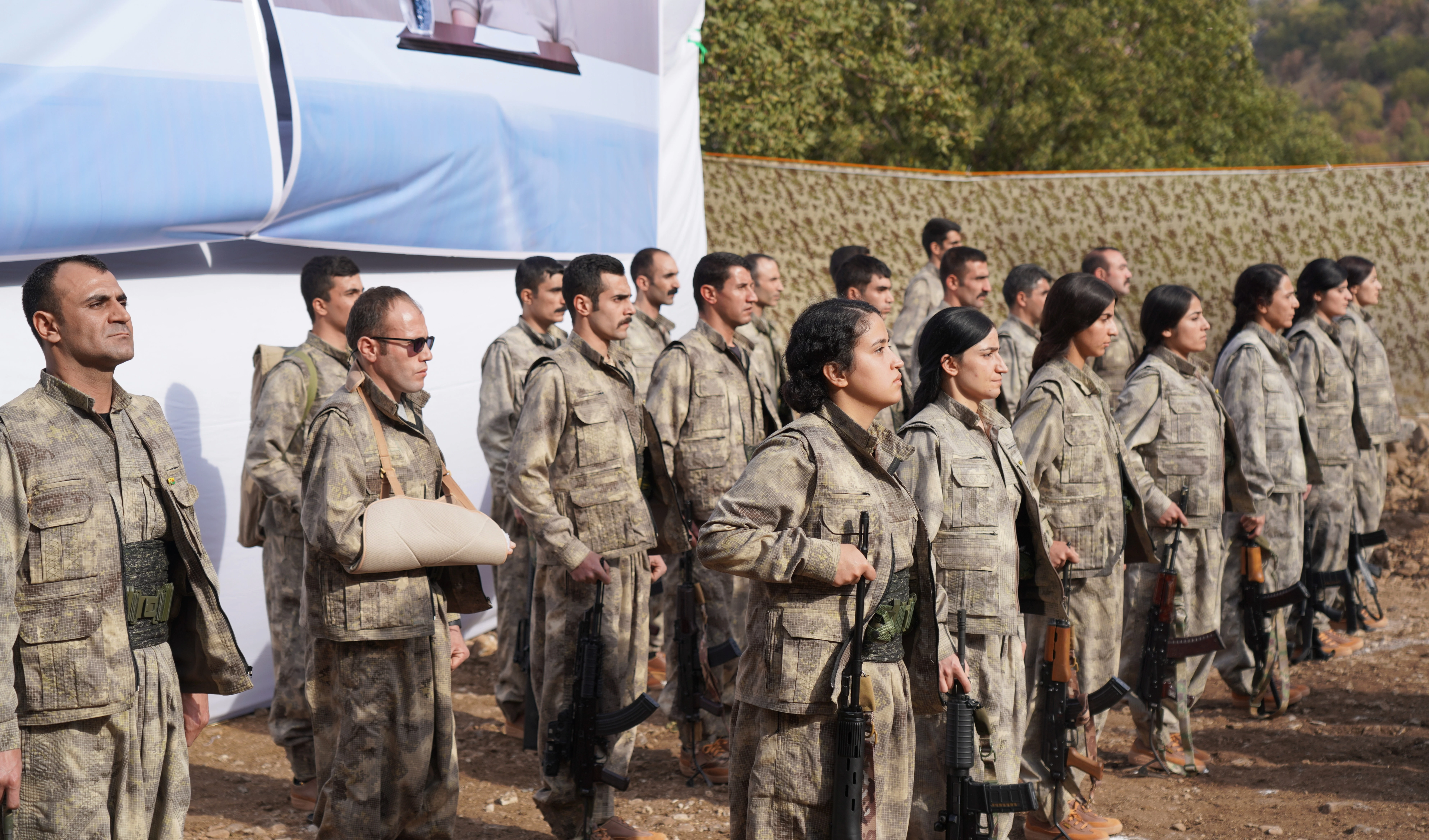Mosul’s al-Nuri Mosque reopens 8 years after being destroyed by ISIS
Eight years after its destruction by ISIS, Iraq has reopened the restored al-Nuri Mosque and al-Hadba minaret in Mosul. The reconstruction, led by UNESCO, marks a turning point in the revival of Iraq’s cultural heritage.
-

This picture shows the 12 century 'Al-Hadba' leaning minaret in the historic Great Mosque of al-Nuri in the old city of Mosul on September 1, 2025, during the official reopening of the mosque after years of reconstruction. (Photo by AHMAD AL-RUBAYE / AFP)
Eight years after it was destroyed by ISIS terrorists, the historic Great Al-Nuri Mosque and its iconic leaning minaret, al-Hadba, have officially reopened in the heart of Mosul. The structures, once reduced to rubble by ISIS, now stand as emblems of resilience, unity, and cultural revival.
On Monday, Prime Minister Mohammed Shia' al-Sudani led the inauguration ceremony, held in Mosul's Old City. The event marked a pivotal moment in the city's long path to recovery. "This reconstruction will remain a defining milestone," said al-Sudani, praising the heroism and determination of Iraqis in rebuilding what extremism attempted to erase.
In his address, al-Sudani underscored Mosul's enduring multicultural fabric, noting that the city "embraces all its communities" and symbolizes the broader diversity of Iraqi society. His remarks echoed a message of defiance against the forces that once tried to divide and destroy the nation through terror and cultural annihilation.
After it was destroyed by ISIS, Al Hadba minaret returns to embrace Mosul skyline decorated with ornamental brickwork featuring floral & geometric designs. At its pinnacle, a gleaming copper crescent is a silent yet powerful reminder that the soul of the city can never be erased. pic.twitter.com/kpArpvWSrz
— Sinan S. Mahmoud (@sinansm) February 5, 2025
UNESCO’s role in 'Reviving the spirit of Mosul'
The restoration of al-Nuri Mosque and al-Hadba minaret is a cornerstone of UNESCO's "Revive the spirit of Mosul" initiative. Launched in 2018, the project has received over $115 million in international funding.
Reconstruction teams utilized traditional building techniques and materials salvaged from the original rubble to ensure architectural authenticity. The al-Hadba minaret, a beloved symbol that once leaned gracefully over Mosul for more than 850 years, was reconstructed with guidance from specialists who previously worked on Italy's Leaning Tower of Pisa.
🧱 Brick by Brick: Restoring Al-Hadba Minaret's Legacy
— UNESCO Iraq Office (@UNESCOIraq) April 1, 2024
🏗️ Over 45,000 bricks from Mosul's Al Hadba Minaret have been carefully restored by Nineveh SBAH & UNESCO, weaving history and resilience back into its structure with traditional Iraqi craftsmanship.@UAEMCY @UAEatUNESCO pic.twitter.com/Hnvu4ewr2b
UNESCO engineers and local archaeologists also removed 115 explosive devices from the site before rebuilding began, highlighting the physical and symbolic threats that had to be overcome to bring this project to completion.
A broader effort to preserve Mosul’s diverse heritage
The revival of al-Nuri Mosque is part of a wider campaign to restore Mosul’s war-ravaged heritage. Other key projects include the reconstruction of al-Tahera Church and Al-Saa'a Convent, 7th-century Christian landmarks that suffered immense damage under ISIS.
Beyond religious sites, the initiative has targeted over 120 heritage houses, several schools, and traditional palatial buildings that once defined Mosul’s historic skyline. These efforts not only preserved cultural landmarks but also generated employment for hundreds of Iraqis trained in specialized restoration techniques.
ISIS's occupation of northern Iraq from 2014 to 2017 inflicted catastrophic damage on the country's cultural heritage. The destruction of al-Nuri Mosque in 2017 was particularly symbolic, as it was from its pulpit that ISIS leader Abu Bakr al-Baghdadi declared the so-called "caliphate."

 3 Min Read
3 Min Read










